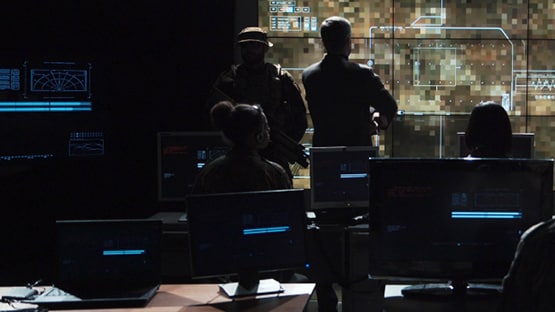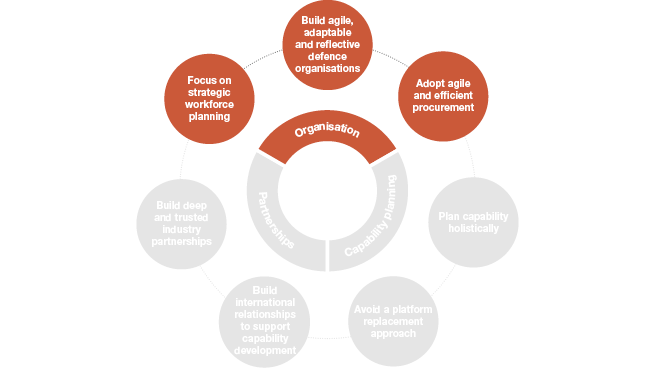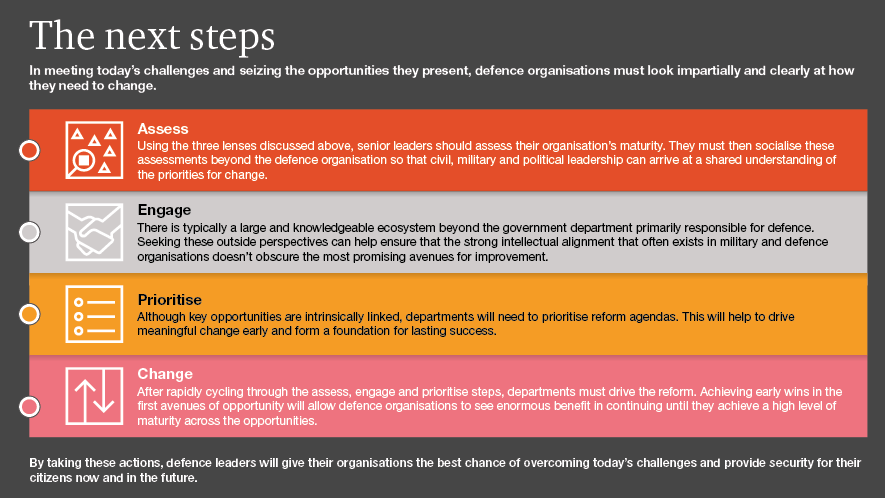
As technology, such as artificial intelligence and robotics, evolves rapidly, it is increasingly difficult for defence organisations to keep pace and, ultimately, keep their citizens safe. Compounding the challenge, ageing populations are making it harder for defence forces to ensure the sufficient availability of recruits. Meanwhile, economic and geopolitical power is shifting, with the potential to restructure the current world order.
With the world at an economic, strategic and technological inflection point, defence forces are under pressure to act now to embrace emerging technology and create flexible organisations — ensuring they don’t end up planning for a form of combat that no longer exists.
This report is the inaugural white paper of PwC's Global Defence Advisory Board, which aims to guide governments through uncertainty and into taking bold action. It outlines key steps that defence organisations and planners can take to adapt and transform in order to keep the nations they serve safe.
Download the report (4.3mb) (PDF)Opens in a new window (file size: 4.3 MB)

...but today’s challenges also present key opportunities
To meet the challenges outlined above, defence and military planners must build and maintain maturity through three mutually reinforcing lenses: the organisation, capability planning and partnerships.
Building agile, adaptable and reflective defence organisations
Defence forces are big, complex organisations with unique challenges. Competing interests and multiple stakeholders mean that meeting today’s challenges is a delicate and difficult task. There is a great opportunity for defence organisations to create the structures, processes and cultures to be agile, adaptable and reflective. In practice, that means undertaking necessary reform and change programmes. Those that cannot change as circumstances require or cannot move quickly enough will struggle to protect the interests of the countries they are tasked with protecting.
Focussing on strategic workforce planning
The workforce and skills that defence organisations require are changing. And these changes, which are exacerbated by demographic shifts and complicated by the fact that many of the necessary skills now fall outside traditional defence workforce planning, put the military at a critical pivot point. Organisations must prepare proactively for these changes, rather than seeking to address skills shortages and imbalances once they have become acute.
Adopting a more agile and efficient approach to procurement
Procurement times in defence organisations around the world typically are longer than in any other industry, and so the ability to refresh capability quickly is a challenge.
Organisations must develop more mature decision-making frameworks, with a focus on attaining a clearer picture of the current drivers of cost and complexity, and understanding precisely how elements of a defence portfolio contribute to operational and strategic objectives.


PwC's Global Defence Advisory Board
The depth of our global network gives PwC a remarkable capacity to bring best practice and insight to everything we do with and for our clients. This is highlighted in our deep and enduring connection with military and strategic leaders, which is a pillar of our Defence practice.
PwC’s Global Government Defence Network (GGDN) spans 32 countries, connecting defence industry teams across the PwC network of firms. The GGDN has established a Global Defence Advisory Board to bring the knowledge and experience of recognised defence industry leaders to clients, helping them solve their most important problems. The advisory board includes:

Terry Weber coordinates PwC’s Global Government Defence Network, and in that role, he established the Global Defence Advisory Board. He is the previous leader for the PwC Defence practice in Australia. As an adviser to the Australian Defence Force for the past 20 years, Weber has been involved in strategic reform programmes and transformation. He is a partner with PwC Australia.

Tony Raper has 15 years combined experience at the most senior levels of defence, including four years as a member of the UK Army Board and more than ten years in strategic consulting in aerospace, defence and security, primarily in the UK, North America, Europe and the Middle East. He is a senior defence and security advisor to PwC UK.

Peter van Uhm, a retired general, was appointed commander of the Royal Netherlands Army in September 2005. Between 2008 and 2012, General van Uhm was the chief of defence of the Netherlands. He is an advisor to PwC Netherlands.

Kym Osley has more than four decades of defence experience, including 15 years as a star-ranked officer. He has extensive experience in military force design, combat operations and the introduction of fifth-generation capabilities into the Australian Defence Force. He is a director with PwC Australia.

Hans-Lothar Domröse, a retired general, was the German military representative to the North Atlantic Treaty Organisation Military Committee (NATO MC) and the European Union Military Committee (EUMC). He was the commander of the Allied Joint Force Command Brunssum between 2012 and 2016. He is an advisor to PwC Strategy& Germany.

























